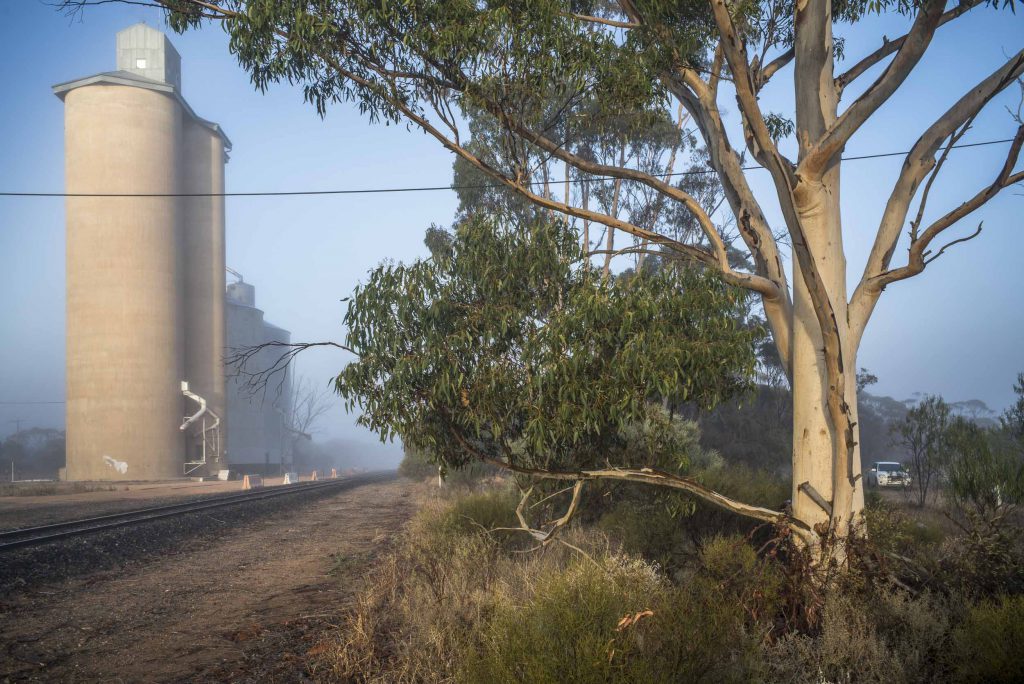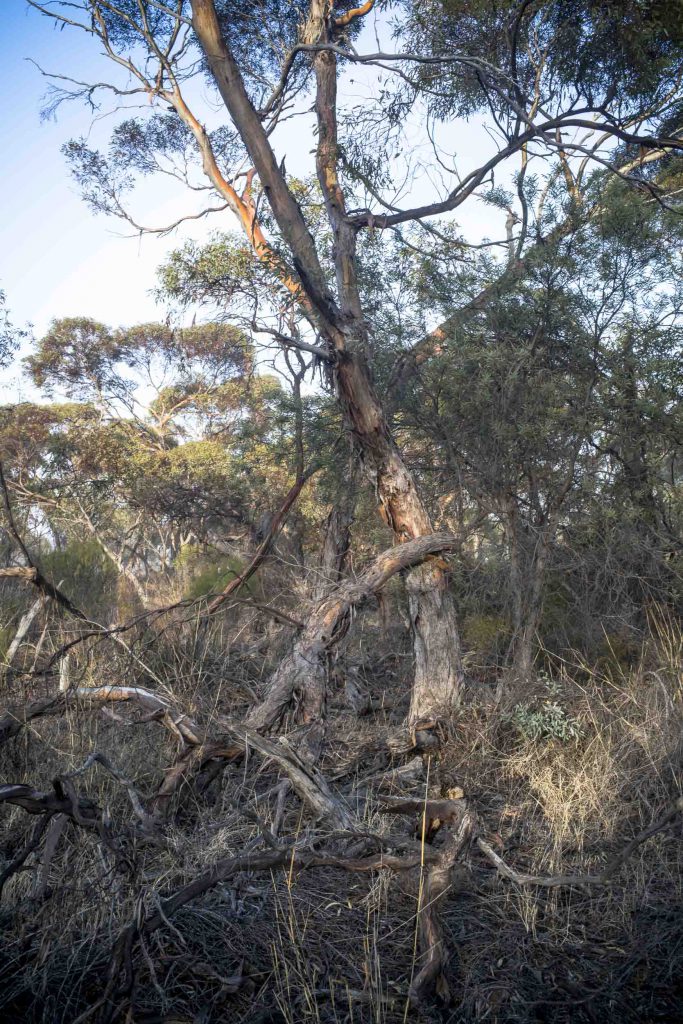On a recent trip to Melbourne I decided to go the long way — along the Mallee Highyway to Ouyen and then along the Calder Highway to Castlemaine. I camped overnight at Walpeup on the Mallee Highway and then at Castlemaine before driving onto Sunshine in Melbourne. This round about way of travelling was designed to provide me with an opportunity to photograph in the Victorian mallee. I wanted to kick start work on the next Mallee Routes photobook.
By swagging overnight at the delightful Walpeup community campground I was able to photograph the local silo in the early morning fog. The fog did not last long.

I was reading Eric Rolls’ A Million Wild Acres: 200 Years of Man and an Australian Forest at the time. This nature writing is about ecological history of the Pilliga forest in NSW since settlement and Rolls demonstrates the damage done by clearing and settler farming practices. His thesis is that forests – which we so readily and romantically see as primeval – could often be the creation of the act of colonial white settlement.
Roll’s environmental history argument is that the Aboriginal people who’d been maintaining open pastures (grassland) across that country through use of fire in the grassy woodlands They were violently forced off their land. In their absence, the over the 200 years since European settlement — a dense, wild forest grew where once, in Aboriginal times, there had been open wooded country that attracted the pastoralist’s eye. The result was the Pilliga Scrub. This forest wasn’t ancient. It was a creation of European settlement..

I decided to walk around the mallee nature trail in Walpeup in the early morning before driving onto Ouyen to linkup to the Calder Highway. It was small area of “wild” nature. I had thought of the mallee scrub as remnant bushland due to the colonial and capitalist ethos, which views nature solely as a resource. As I walked around the trail with the sun behind me this marginal landscape evoked a sense of loss. What little remained was squeezed in-between agricultural fields that embodied a history that celebrated human control over an unruly Australian land.

